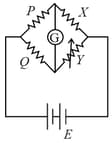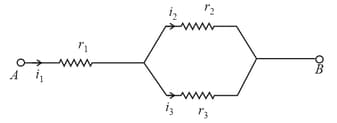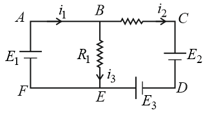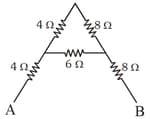Embibe Experts Solutions for Chapter: Current Electricity, Exercise 1: AIPMT - 4th May 2014
Embibe Experts Physics Solutions for Exercise - Embibe Experts Solutions for Chapter: Current Electricity, Exercise 1: AIPMT - 4th May 2014
Attempt the free practice questions on Chapter 13: Current Electricity, Exercise 1: AIPMT - 4th May 2014 with hints and solutions to strengthen your understanding. EMBIBE CHAPTER WISE PREVIOUS YEAR PAPERS FOR PHYSICS solutions are prepared by Experienced Embibe Experts.
Questions from Embibe Experts Solutions for Chapter: Current Electricity, Exercise 1: AIPMT - 4th May 2014 with Hints & Solutions
Two resistors of resistance, and are connected in parallel in an electrical circuit. The ratio of the thermal energy developed in to that in in a given time is
A copper wire of length and radius has electrical resistance of . The current density in the wire for an electric field strength of is:
A Wheatstone bridge is used to determine the value of unknown resistance by adjusting the variable resistance as shown in the figure. For the most precise measurement of , the resistances and

Column - I gives certain physical terms associated with flow of current through a metallic conductor. Column - II gives some mathematical relations involving electrical quantities. Match Column - I and Column - II with appropriate relations.
| Column - I | Column - II |
| (A) Drift Velocity | |
| (B) Electrical Resistivity | |
| (C) Relaxation Period | |
| (D) Current Density |
The effective resistance of a parallel connection that consists of four wires of equal length, equal area of cross-section and same material is . What will be the effective resistance if they are connected in series?
Three resistors having resistances and are connected as shown in the given circuit. The ratio of currents in terms of resistances used in the circuit is :

For the circuit given below, the Kirchhoff's loop rule for the loop is given by the equation

The equivalent resistance between and for the mesh shown in the figure is

